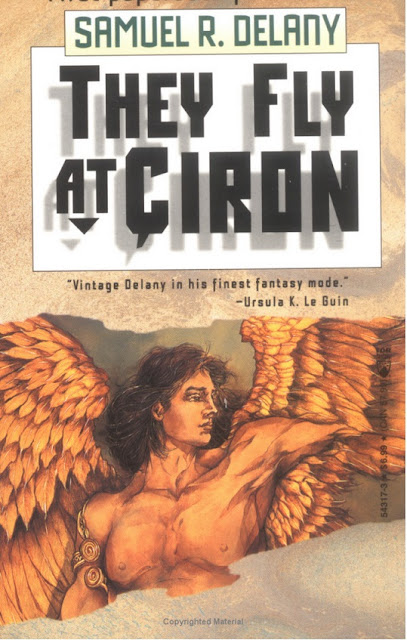Samuel Delany has a new book containing three of his earliest novels. I'm guessing they're more accessible to readers. It's called "A,B,C: Three Short Novels". It includes the books "They Fly At Ciron", "The Jewels of Aptor" and "The Ballad of Beta 2".
I actually thought Dahlgren was great because of the weird way he combined two different typefaces on the page. That and the Holographic Gangs.
And here's a gallery because pulp art can be cool.
There's a long (part one) interview about it here and "Dhalgren" comes up.
Here's a bit of the interview:
Q: At this year’s Readercon there was a panel on DHALGREN at 40 years. Of all your novels, why do you think this one has been so widely-read and is such an enduring work? Do you consider this your greatest work?SRD: It’s totally outside my ability to make judgments of that sort. (Mark Twain—along with William Dean Howells and Twain’s first major biographer, Albert Bigelow Paine—died believing his greatest novel would be The Personal Recollections of Joan of Arc—his longest piece of fiction and one that that took him a decade and a half to write, but which, in the ten-page plus Wikipedia article on Twain, gets only four lines near the end. Most graduate students these days don’t even know it exists. The Oxford Companion to American Literature doesn’t even mention it.)
Many years ago, I heard Michael Moorcock say, “Why would you work on any piece of writing if you didn’t consider it a masterpiece—at least for the duration you were writing it?” That seemed right at the time. And still does. Currently I feel the one I’m working on now is my best. But the other side of the coin is simply that too many things happen in the world to make you aware, once it’s done, it’s nowhere near a masterpiece. Masterpieces are masterpieces because of the conversations they have with the world. And you lose all control of that conversation the moment the last page is done. You may have personal reasons to be fond of it, because of some problem you solved, some reference you managed to bury in the text, but such successes in both cases are precisely because both are invisible—or at any rate invisible to most.
I actually thought Dahlgren was great because of the weird way he combined two different typefaces on the page. That and the Holographic Gangs.
And here's a gallery because pulp art can be cool.










No comments:
Post a Comment